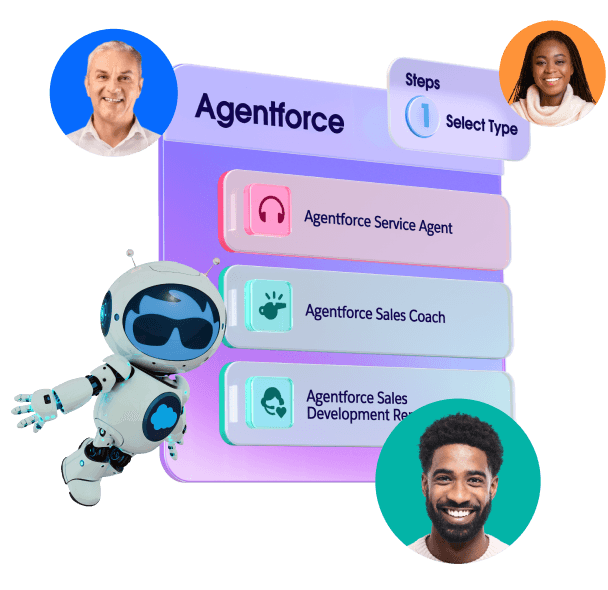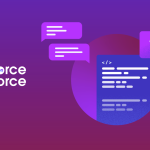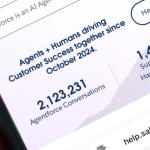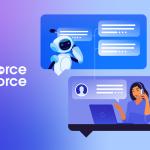Everyone’s asking the same thing right now: Is AI going to take my job? But I think that’s the wrong question. A better one is: How is AI going to fundamentally change my job?
I’ve been thinking about that a lot lately, especially as I spend more time working with AI. As a writing partner. As a thought partner.
When I step back, AI reminds me of an intern: fast, eager, highly educated, and ready to help however it can. And if you give it clear instructions, it can be surprisingly helpful.
But just like an intern, its enthusiasm sometimes outpaces its ability. It’ll take a confident swing … and confidently miss. That’s where humans come in.
What’s your agentic AI strategy?
Our playbook is your free guide to becoming an agentic enterprise. Learn about use cases, deployment, and AI skills, and download interactive worksheets for your team.




The next big shift: Learning to work with AI
Success with AI isn’t simply using a tool; it’s guiding the work. We set the direction of a task, define what “good” looks like, review the output, and shape what comes next. In short, we’re managing AI. And that’s a big shift, especially if you’re used to doing it all yourself.
Here’s a quick example. Let’s say I’m working on something creative: messaging, naming, design concepts. I’ll ask the AI for 50 variations. Then I’ll pick a few I like, give feedback, and go another round. It’s fast and iterative, but I still need to know what’s working and why. That judgment, that taste? That’s the human part.
And this is where context really matters. Good managers don’t just assign tasks, they give context and pass-downs. They explain: Here’s what we’re trying to do. Here’s why it matters. Here’s what good looks like. That clarity turns a task into a shared goal.
Working with AI is no different. Without the right context or feedback, AI is just guessing.
But when you do provide it — when you guide the AI with the same clarity and intent as you might do with an employee — you get much more back. Because great managers aren’t just organisers. They’re multipliers. They amplify what their teams can do. And it’s the same with AI. The best managers will get 10x better results from AI just by knowing how to guide it well.
Managing outcomes is part of everyone’s job
There’s also an opportunity here to grow your own skills. Because when you have to explain what good looks like — when you have to guide someone (or something) else through the work — you start to understand it more deeply yourself. Teaching is often the best way to learn. So, in a way, managing the work doesn’t just make you more productive. It makes you better.
Or imagine a junior marketer kicking off a big campaign. They meet with stakeholders, align on goals, and pull together what the AI needs: brand guidelines, a few past campaigns that hit the mark, maybe even a mood board to set the tone. Then they hand it off to an AI agent, asking for a draft brief, supporting research, and headline ideas. The AI gets to work. But it’s the marketer who reviews the output, sharpens the story, and shapes it into something that works. That’s not just doing the task. That’s managing the work.
And that’s the shift. For a long time, “managing” was something you did after a promotion, once you had the title. But not anymore. In a world where AI is doing more of the work, managing outcomes is part of everyone’s job. Honestly, I think we need a Manager 101 course in college or trade school — not for managing people, but for managing work, tools, and results when AI is part of the team.
Or maybe you’re someone who loves being in the work: writing, designing, building. That doesn’t have to change. But with AI in the mix, you have a helper now: fast, tireless, eager, and in need of direction. So, it’s no longer just about doing the task. It’s about guiding the work and shaping the outcome.
And as the guide, you stay in control of the creative direction. The insight, the judgment, the context: That’s what makes the work good. And it’s exactly what AI needs from you. In return, it helps you move faster, explore more, and spend more time on what matters most.
How do you start?
Treat AI like a teammate. Give it context. Set the direction. Define what good looks like. Then review, refine, repeat.
Want to lead in the age of AI? Learn to manage the work. The title can come later.
So the real question isn’t whether AI will take your job. It’s whether you’re ready to lead the work in a whole new way.



























